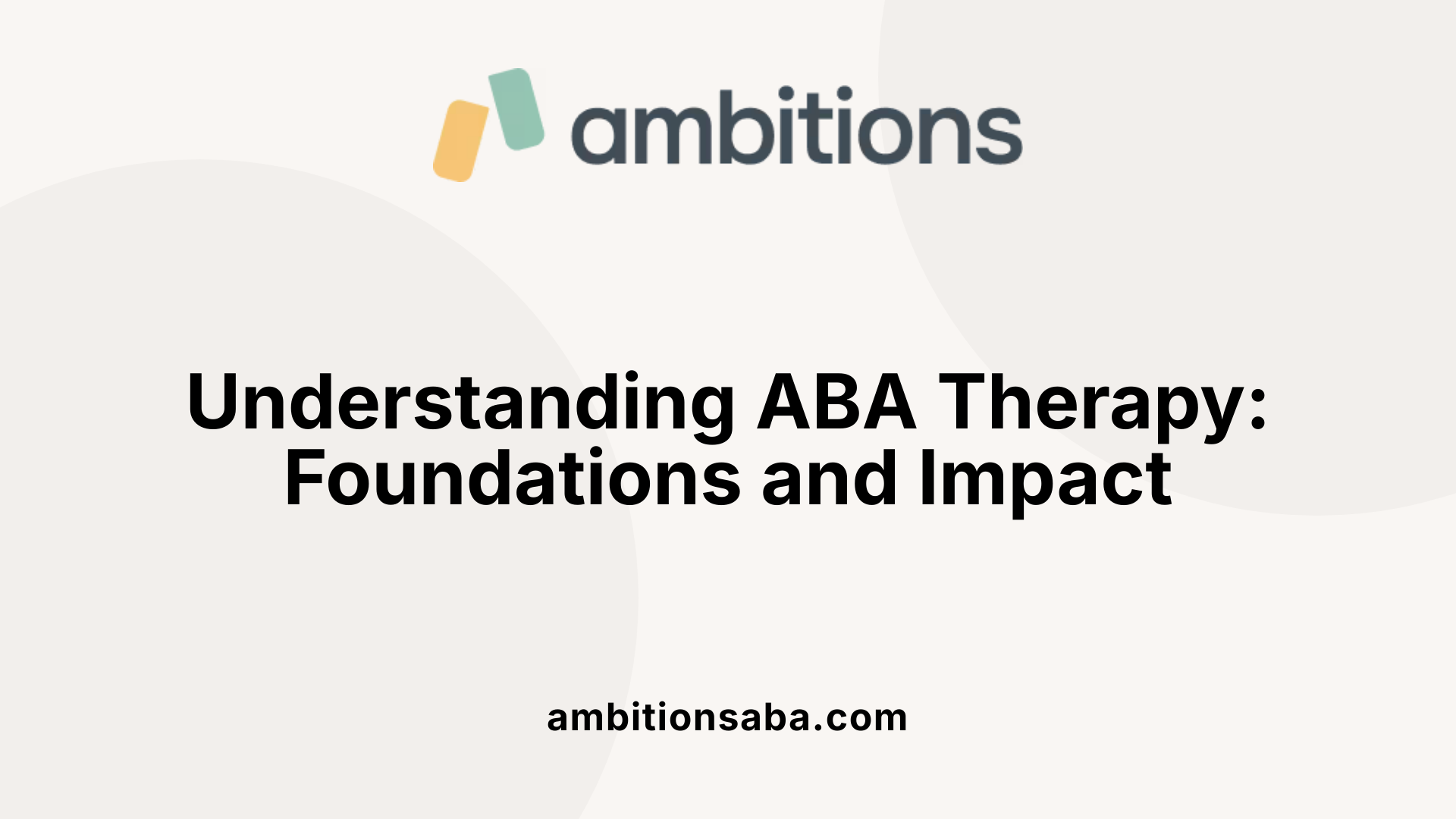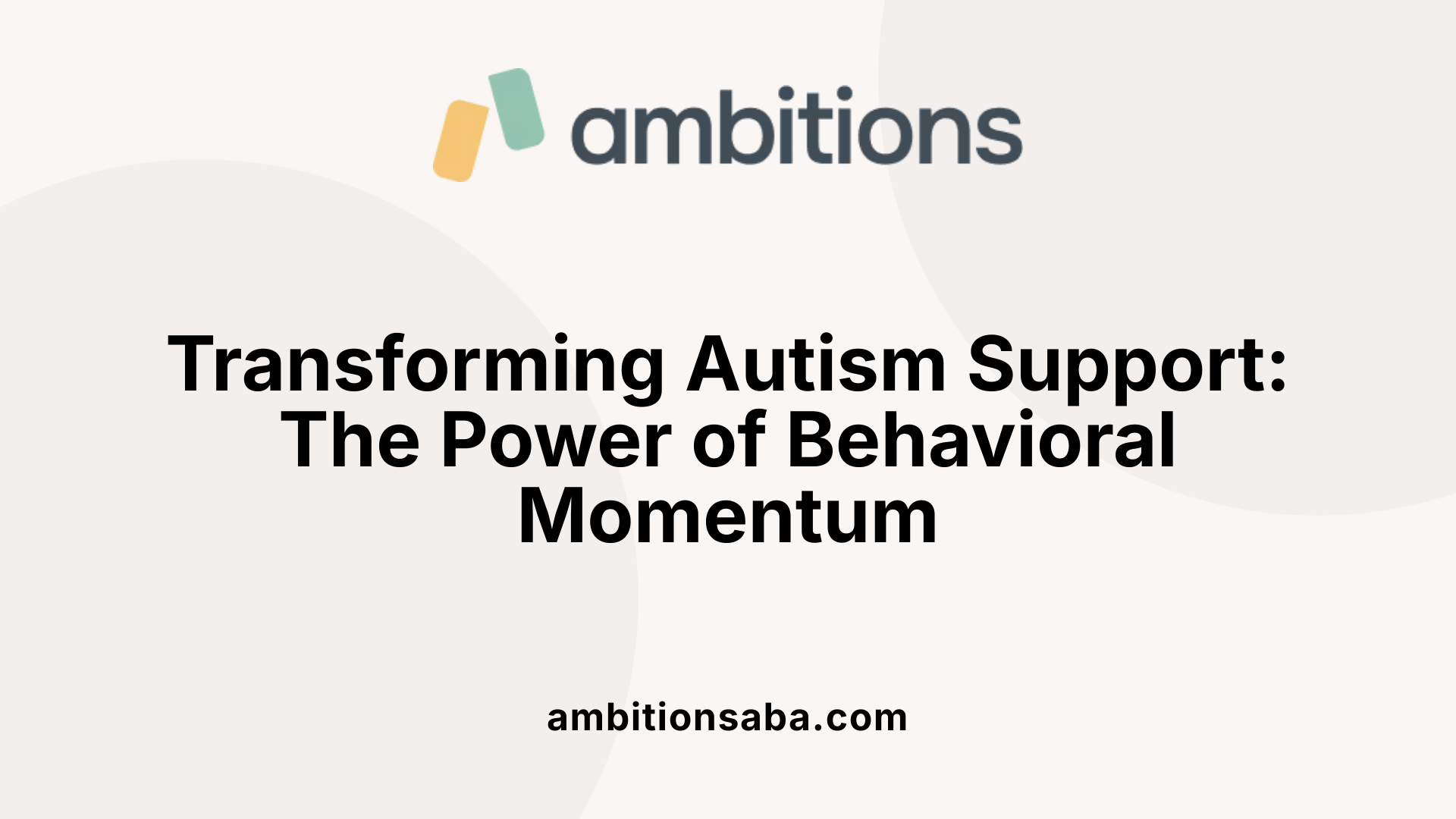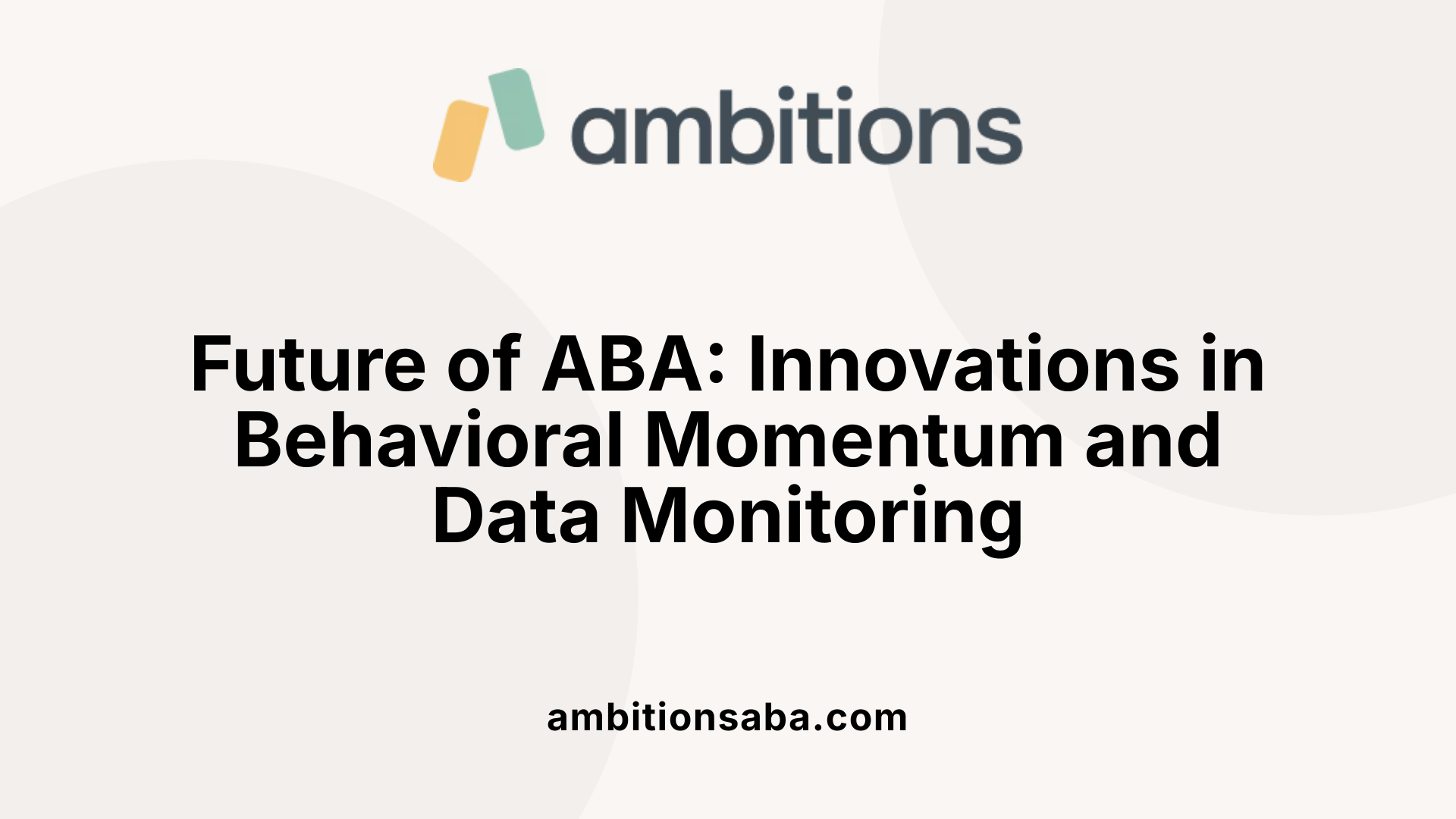Enhancing Social Literacy through Context Clues and Social Cues
Understanding Behavioral Momentum in Autism Support
Behavioral momentum is a powerful concept in Applied Behavior Analysis (ABA) therapy that significantly improves how individuals with autism acquire new skills, handle challenges, and adapt to changes. Rooted in the science of behavior persistence, it emphasizes starting with tasks an individual is likely to succeed at, building positive momentum toward more complex activities. This article explores what behavioral momentum is, why it matters in ABA therapy, and practical ways to use it effectively to support children with autism.
Foundations of ABA Therapy and Its Role in Autism Support

What is Applied Behavior Analysis (ABA) therapy and how is it used to support individuals with autism?
Applied Behavior Analysis (ABA) therapy is a scientifically validated approach that focuses on understanding and improving behavior in individuals with autism. ABA uses principles of learning, such as positive reinforcement, to encourage the development of communication, social skills, and daily living abilities. It also aims to reduce behaviors that may be harmful or interfere with learning.
ABA programs are personalized to each individual’s needs. Board Certified Behavior Analysts (BCBAs) lead the development of these programs and oversee therapy implementation. The therapy often involves breaking skills down into manageable steps and teaching them systematically. Techniques used include Discrete Trial Training, Pivotal Response Treatment, and the Early Start Denver Model.
Research strongly supports ABA’s effectiveness, showing that early and intensive application can lead to significant improvements in language, intellectual function, social interaction, and independence. The structured and consistent use of reinforcement encourages sustained engagement and helps generalize learned skills across different environments, such as home, school, and community settings.
Overall, ABA therapy serves as a foundational tool in autism support, empowering individuals to build confidence, develop cooperation, and increase adaptability through evidence-based interventions tailored by expert clinicians.
Who Provides ABA Therapy? Qualifications and Roles

Who typically provides ABA therapy and what qualifications do these professionals have?
ABA therapy is delivered by professionals with specialized credentials and training. The primary providers include Board-Certified Behavior Analysts (BCBAs), Licensed Behavior Analysts (LBAs), and Registered Behavior Technicians (RBTs).
BCBAs are graduate-level clinicians responsible for developing, supervising, and adjusting individualized treatment plans. They have completed advanced education, passed rigorous certification exams, and fulfilled supervised clinical fieldwork requirements. LBAs possess similar expertise but also hold state licenses to practice independently, depending on regulations.
RBTs are paraprofessionals who implement therapy plans directly with clients under the guidance of BCBAs or LBAs. Their role focuses on delivering interventions and collecting behavioral data to inform progress.
How do these providers collaborate with caregivers and healthcare teams?
Effective ABA therapy depends on collaboration. Providers work closely with caregivers, empowering them through training, booster sessions, and consistent behavioral supports at home. This partnership encourages skill generalization across settings.
Moreover, ABA professionals coordinate with other healthcare team members, such as speech therapists and pediatricians, to ensure integrative care and optimize treatment outcomes. This multidisciplinary approach fosters comprehensive support tailored to each individual's needs.
In summary, ABA therapy is delivered by credentialed experts who combine clinical expertise with teamwork among caregivers and medical professionals to promote meaningful behavior change.
Behavioral Momentum: Concept and Clinical Application in ABA

What is Behavioral Momentum in ABA?
Behavioral momentum refers to the persistence of behavior when environmental conditions change, similar to the physical concept of momentum. In Applied Behavior Analysis (ABA), it emphasizes starting with small, achievable tasks—typically those the individual is likely to comply with—and then gradually introducing more difficult or less preferred tasks. This approach creates a momentum of positive behavior, improving the likelihood that the child stays engaged and cooperative throughout therapy.
How Do High-Probability Request Sequences (HPRS) Work?
High-probability request sequences involve presenting simple, high-probability tasks that the child can easily succeed at, such as familiar or preferred activities. These are used at the beginning of sessions to build confidence and generate compliance before transitioning to more challenging demands. This sequencing helps increase overall task compliance and reduces resistance to less preferred activities.
How Does Starting with Simple Tasks Build Confidence?
Beginning sessions with easy tasks allows children with autism to experience quick successes, which boosts confidence and motivation. This momentum encourages them to attempt more difficult skills later in the session. Positive reinforcement such as praise or access to preferred items following these tasks further strengthens engagement.
How Does Behavioral Momentum Increase Task Compliance and Engagement?
By structuring tasks sequentially—from simple, achievable steps to more complex ones—behavioral momentum strategies increase a child’s cooperation and adaptability. Techniques like breaking down activities (e.g., hand-washing) into manageable parts and incorporating visual supports maintain engagement. Additionally, research shows that using high-probability activities combined with positive reinforcement significantly enhances participation rates and sustains behavior change.
Behavioral momentum integrates behavioral theory with practical clinical methods, resulting in more effective and generalized learning outcomes for children with autism. It encourages consistent application and caregiver involvement to optimize therapy success.
Techniques and Strategies to Enhance Behavioral Momentum in Therapy
Starting with simple, high-probability tasks
A powerful strategy in ABA therapy is beginning sessions with simple, high-probability tasks—activities a child is likely to complete successfully. This approach builds confidence and engagement, creating a positive momentum that supports the gradual introduction of more challenging requests. For example, a therapist might ask a child to perform easy actions like clapping hands or touching a toy before moving on to less preferred tasks. This sequence, often called the High Probability Request Sequence (HPRS), increases compliance and cooperation.
Use of positive reinforcement
Positive reinforcement is integral to enhancing behavioral momentum. Praising accomplishments or providing access to preferred objects or activities after task completion strengthens the likelihood of continued participation. Reinforcements not only encourage repeated behavior but also improve motivation, fostering a cooperative learning environment. Consistent use of these reinforcements at home, supported by caregivers, further boosts therapy outcomes.
Task sequencing and breaking down complex skills
Breaking down complex behaviors into smaller, manageable steps allows learners to master each component systematically. For instance, hand-washing is divided into sequential steps that a child learns individually, promoting structured skill development. This method makes difficult tasks less overwhelming and supports sustained engagement and generalization across different settings.
Use of visual supports and choices
Incorporating visual schedules and offering choices alongside behavioral momentum strategies helps reduce resistance and improves adaptability. These supports provide clear expectations and empower children by involving them in decision-making. The combined use of behavioral momentum with visual supports enhances compliance while maintaining the child’s interest.
Combining Behavioral Momentum with other ABA techniques
Behavioral momentum works effectively when integrated with other ABA practices. Techniques such as Differential Reinforcement of Alternative behavior (DRA) extend treatment effects and reduce the resurgence of problematic behaviors. Scheduling both contingent and non-contingent reinforcement creates stronger, more persistent behaviors that generalize better to varied environments. Caregiver involvement, booster sessions, and data monitoring with advanced technologies like AI-driven reporting further optimize behavioral momentum strategies, making therapy personalized and effective.
| Technique | Purpose | Implementation Example |
|---|---|---|
| High Probability Request Sequence | Build momentum through easy tasks | Asking simple actions before difficult tasks |
| Positive Reinforcement | Encourage and maintain desired behavior | Praise or preferred activities as rewards |
| Task Sequencing | Facilitate skill mastery through steps | Breaking hand-washing into steps |
| Visual Supports and Choices | Enhance understanding and reduce resistance | Using visual schedules and offering choices |
| Integration with Other ABA Techniques | Reduce relapse and strengthen generalization | Combining behavioral momentum with DRA and data monitoring |
Outcomes and Benefits of Using Behavioral Momentum in Autism Therapy

Improved Engagement and Compliance
Behavioral momentum techniques in ABA therapy start sessions with simple, achievable tasks that children with autism are likely to complete successfully. This sequence, called the High Probability Request Sequence (HPRS), increases engagement rates and compliance, creating a positive momentum toward completing more challenging tasks. Approximately 92% of Board Certified Behavior Analysts report using these strategies due to their effectiveness in facilitating cooperation during therapy.
Building Cooperation and Adaptability
By successfully completing small tasks with positive reinforcement such as praise or preferred activities, children build confidence and adaptability over time. Behavioral momentum reduces resistance to change by introducing choices, visual supports, and gradually increasing task difficulty. This approach enables children to transition smoothly from easier activities to more complex skills while maintaining motivation and cooperation.
Generalization of Skills Across Settings
Structured task progression and consistent application of reinforcement help in mastering each component of complex skills like hand-washing or dressing. Behavioral momentum also facilitates the generalization of behaviors, meaning children can successfully apply learned skills across home, school, and community environments. This reduces relapse and supports lasting behavior change through sustained engagement.
Parent and Caregiver Involvement in Sustaining Outcomes
Caregiver participation is vital in maximizing therapy benefits. Utilizing visual schedules, providing booster sessions, and supporting behavioral strategies at home enhance skill generalization and maintenance. Technology, including automated data collection and AI-driven reporting, further assists families and therapists in tracking progress and adjusting interventions as needed.
Families engaging in ABA therapy with behavioral momentum strategies can expect improvements not only in communication and social skills but also in the child’s independence, emotional regulation, and real-world social functioning. The collaborative effort between therapists and caregivers strengthens outcomes and empowers children with autism to realize meaningful developmental gains.
Advances and Future Directions in Behavioral Momentum Research and Practice

How is data collection and automated monitoring enhancing behavioral momentum strategies?
Automated data collection systems are increasingly used to monitor behavioral momentum techniques during ABA sessions. These systems enable therapists to track engagement rates, compliance, and resistance to change in real time. The continuous data flow allows for timely adjustments in therapy plans, ensuring interventions are personalized and effective. This development supports more precise measurement of therapy outcomes, offering a clearer picture of progress.
In what ways is AI-driven reporting expected to improve therapy personalization?
Advances in artificial intelligence are set to revolutionize the personalization of behavioral momentum strategies. AI-driven reporting analyzes large datasets gathered from therapy sessions to identify patterns in behavior persistence and responsiveness. This technology can recommend modifications tailored to individual needs, enhancing the effectiveness of interventions. As a result, therapists can implement data-informed decisions, optimizing treatment plans and reducing trial-and-error approaches.
What recent research insights exist on behavior persistence and relapse prevention?
Recent behavioral studies highlight the importance of reinforcement schedules in promoting behavior persistence and preventing relapse. Research involving human subjects shows denser reinforcement leads to greater resistance to change, making behaviors more stable across environments. Extended treatments using Differential Reinforcement of Alternative behavior (DRA) have demonstrated fewer instances of problem behavior resurgence compared to brief interventions. These findings emphasize the need for sustained, consistent reinforcement to maintain behavior change.
How are researchers and practitioners collaborating to enhance behavioral momentum implementation?
There is a growing movement toward collaboration between basic researchers and applied clinicians in the field of ABA therapy. This partnership fosters translation of sophisticated behavioral theories into practical strategies that improve therapy outcomes. Sharing insights from laboratory research with frontline practitioners helps refine intervention techniques, such as integrating choices, visual supports, and sequential task presentation. Such teamwork ensures that behavioral momentum strategies are both evidence-based and clinically relevant.
What strategies help strengthen behavior resistance to change?
ABA therapy incorporates combined reinforcement approaches to strengthen desirable behaviors and increase resistance to environmental changes. For example, coupling alternative positive stimuli with stimuli associated with problem behaviors can enhance treatment efficacy. Utilizing high-probability request sequences and providing consistent positive reinforcement build momentum that supports engagement and compliance. These strategies not only foster skill acquisition but also facilitate generalization across settings, making behavior more adaptable and durable.
Leveraging Behavioral Momentum for Lasting Impact
Behavioral momentum is a vital tool in ABA therapy that empowers children with autism to progress through learning challenges with greater confidence and cooperation. By starting with achievable tasks and carefully layering more complex demands, therapists and caregivers create a positive cycle of success that reinforces desired behaviors and fosters adaptability. Supported by qualified professionals and enriched by advancing technologies, behavioral momentum strategies contribute substantially to the effectiveness and personalization of autism interventions. As research evolves and collaboration between scientists and clinicians strengthens, the promise of behavioral momentum in improving the lives of autistic individuals continues to grow, offering hope for more resilient and generalized skill development.
References
- 9 Behavioral Momentum ABA Examples to Enhance ...
- Behavioral Momentum in ABA Therapy: The Power ...
- Behavioral momentum theory: Understanding persistence and ...
- Implications for applied behavior analysis and therapy
- Applied Behavior Analysis (ABA)
- Applied Behavior Analysis (ABA)
- The Controversy Around ABA
- A Treatment Summary of Applied Behavior Analysis
- ABA Techniques: Strategies for Behavior Analysts - GSEP Blog

